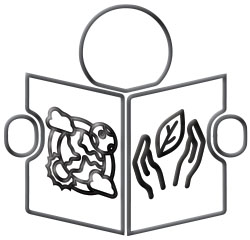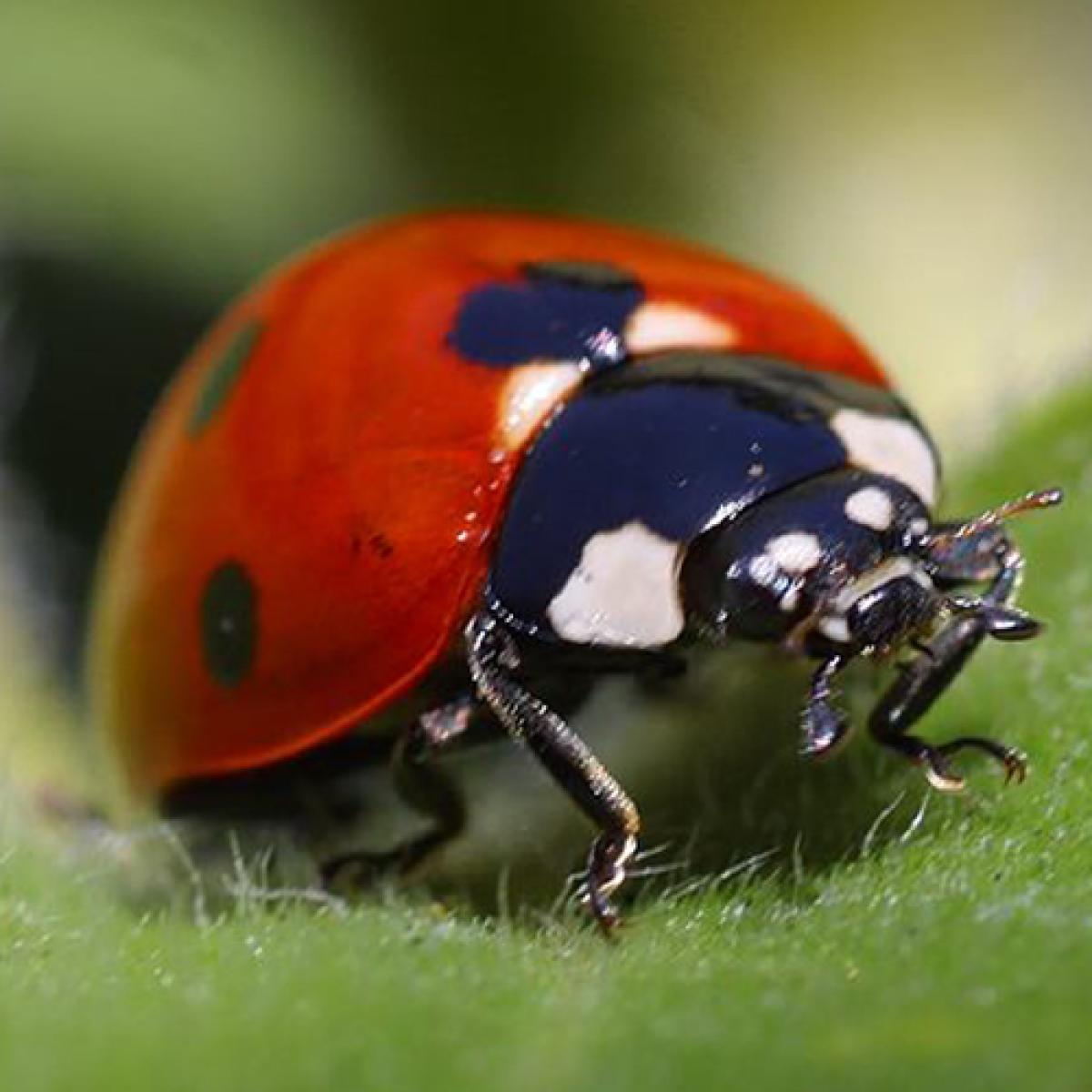Biomes Teacher's Guide
 Exploring other places in the world, or just out in your backyard can be fun. This biome section provides an extensive collection of materials for students at different grade levels.
Exploring other places in the world, or just out in your backyard can be fun. This biome section provides an extensive collection of materials for students at different grade levels.
Students can explore a wide range of environments through our virtual tours using a computer, tablet, or a mobile phone. We also include the teaching standards that are covered with these materials and activities. Stay on the look out, as we are working to add more tours to the site.
Assets - what is provided on the website
The biome section includes 9 biomes that are introduced on the Boundless Biomes page. Each biome covers three topics
- Anatomy of the biome
- Animals found in the biome
- Plants (or other producers) found in the biome
- Worksheets provides
- Biome Map Coloring Worksheet
- Biome Organism Matching Game
- Biome Bits for younger students (grades 2-5).
- Virtual Reality (VR) tours are available for the following biomes. These tours can be viewed on desktop, laptop, iPads, and mobile phones.
- Desert - southwestern Arizona desert features baby curved-billed thrasher birds, Gila monster, rattlesnake, and audio from a researcher studying Gila monsters.
- Grassland - United States prairie features ants, various plants, a butterfly feeding video, a beetle mating video, and audio from a researcher working in grassland restoration. Videos are hosted on Vimeo.
- Rainforest - Panama rainforest features ants, termites, plant videos, and audio from a researcher studying ants. Videos are hosted on Vimeo.
- Savanna - Kenya savanna features ostrich, zebras, giraffes, hyena (including VR video), elephants, and audio from a researcher studying symbiotic relationships.
- Temperate Forest - northern Arizona and western Colorado features aspen groves, signs of animals, and the ability to time travel between seasons.
- Tundra - Iceland tundra features glacial streams, an ice-covered beach, an old lava flow, and an astronaut training ground.
Tour maps for tour versions 1.0 - how to find your way around
There is a map for each of the following biomes that can be used as an overview of the tour and the locations for different points of interest. Teachers might want to use this as they guide students through the tour, or download and share with students for additional navigation help. In the 2.0 version of the tours the there is a pop-up map inside each tour.
Materials and equipment - what you need to use these materials
- Computers or tablets for use with the website and virtual tours
- Pencil for filling out worksheets
- Optional - Coloring pencils for coloring the map and match game worksheet
Tips and time required for classroom implementation
Time Required: 20 - 30 minutes, depending on how long students are expected to explore the biomes.
- Depending on the amount of time, students can explore additional biomes. It is recommended that students compare at least two biomes as part of the activity.
- Virtual Biomes can be viewed on desktop, laptop, iPad, and mobile phones. Mobile phones also provide an option for VR goggles like Google Cardboard.
Classroom set-up
- For classrooms with computers or tablets students can be directed to the Boundless Biomes page.
- In classrooms that do not have computers but are mediated with a single classroom computer and projector, teachers can facilitate the exploration as a group activity.
- If the classroom lacks technology, all the content including the biomes can be accessed on a mobile phone. In this case, the assignment might be given as homework or extra credit.
- Print out desired worksheets for students to fill out and color.
Teaching Standards
Next Generation Science Standards:
Kindergarten
K. Interdependent Relationships in Ecosystems: Animals, Plants, and Their Environment
K-LS1-1. Use observations to describe patterns of what plants and animals (including humans) need to survive. [Clarification Statement: Examples of patterns could include that animals need to take in food but plants do not; the different kinds of food needed by different types of animals; the requirement of plants to have light; and that all living things need water.]
K-ESS2-2. Construct an argument supported by evidence for how plants and animals (including humans) can change the environment to meet their needs. [Clarification Statement: Examples of plants and animals changing their environment could include a squirrel digs in the ground to hide its food and tree roots can break concrete.]
K-ESS3-1. Use a model to represent the relationship between the needs of different plants or animals (including humans) and the places they live. [Clarification Statement: Examples of relationships could include that deer eat buds and leaves, therefore, they usually live in forested areas, and grasses need sunlight so they often grow in meadows. Plants, animals, and their surroundings make up a system.]
Grade 2
Students are also expected to compare the diversity of life in different habitats.
2-LS4 Biological Evolution: Unity and Diversity
2-LS4-1. Make observations of plants and animals to compare the diversity of life in different habitats. [Clarification Statement: Emphasis is on the diversity.]
Grade 3
3-LS2 Ecosystems: Interactions, Energy, and Dynamics
LS2.C: Ecosystem Dynamics, Functioning, and Resilience When the environment changes in ways that affect a place’s physical characteristics, temperature, or availability of resources, some organisms survive and reproduce, others move to new locations, yet others move into the transformed environment, and some die. (Secondary to 3-LS4-4)
3-LS4 Biological Evolution: Unity and Diversity
3-LS4-3. Construct an argument with evidence that in a particular habitat some organisms can survive well, some survive less well, and some cannot survive at all. [Clarification Statement: Examples of evidence could include needs and characteristics of the organisms and habitats involved. The organisms and their habitat make up a system in which the parts depend on each other.]
Disciplinary Core Ideas
LS4.D: Biodiversity and Humans
Populations live in a variety of habitats, and changes in those habitats affect the organisms living there. (3-LS4-4)
Grade 5
5-LS2-1. Develop a model to describe the movement of matter among plants, animals, decomposers, and the environment. [Clarification Statement: Emphasis is on the idea that matter that is not food (air, water, decomposed materials in soil) is changed by plants into matter that is food. Examples of systems could include organisms, ecosystems, and the Earth.] [Assessment Boundary: Assessment does not include molecular explanations.]
LS2.A: Interdependent Relationships in Ecosystems The food of almost any kind of animal can be traced back to plants. Organisms are related in food webs in which some animals eat plants for food and other animals eat the animals that eat plants. Some organisms, such as fungi and bacteria, break down dead organisms (both plants or plants parts and animals) and therefore operate as “decomposers.” Decomposition eventually restores (recycles) some materials back to the soil. Organisms can survive only in environments in which their particular needs are met. A healthy ecosystem is one in which multiple species of different types are each able to meet their needs in a relatively stable web of life. Newly introduced species can damage the balance of an ecosystem. (5-LS2-1)
LS2.B: Cycles of Matter and Energy Transfer in Ecosystems Matter cycles between the air and soil and among plants, animals, and microbes as these organisms live and die. Organisms obtain gases, and water, from the environment, and release waste matter (gas, liquid, or solid) back into the environment. (5-LS2-1)
5-ESS2-1. Develop a model using an example to describe ways the geosphere, biosphere, hydrosphere, and/or atmosphere interact. [Clarification Statement: Examples could include the influence of the ocean on ecosystems, landform shape, and climate; the influence of the atmosphere on landforms and ecosystems through weather and climate; and the influence of mountain ranges on winds and clouds in the atmosphere. The geosphere, hydrosphere, atmosphere, and biosphere are each a system.] [Assessment Boundary: Assessment is limited to the interactions of two systems at a time.]
ESS2.A: Earth Materials and Systems Earth’s major systems are the geosphere (solid and molten rock, soil, and sediments), the hydrosphere (water and ice), the atmosphere (air), and the biosphere (living things, including humans). These systems interact in multiple ways to affect Earth’s surface materials and processes. The ocean supports a variety of ecosystems and organisms, shapes and forms, and influences climate. Winds and clouds in the atmosphere interact with the landforms to determine patterns of weather. (5-ESS2-1)
Middle School
The performance expectations in LS2: Interactions, Energy, and Dynamics Relationships in Ecosystems help students formulate an answer to the question, “How does a system of living and non-living things operate to meet the needs of the organisms in an ecosystem?” The LS2.C: Ecosystem Dynamics, Functioning, and Resilience. Ecosystems are dynamic in nature; their characteristics can vary over time. Disruptions to any physical or biological component of an ecosystem can lead to shifts in all its populations.
(MS-LS2-4). Biodiversity describes the variety of species found in Earth’s terrestrial and oceanic ecosystems. The completeness or integrity of an ecosystem’s biodiversity is often used as a measure of its health.
MS-LS2 Ecosystems: Interactions, Energy, and Dynamics
MS-LS2-4. Construct an argument supported by empirical evidence that changes to physical or biological components of an ecosystem affect populations. [Clarification Statement: Emphasis is on recognizing patterns in data and making warranted inferences about changes in populations, and on evaluating empirical evidence supporting arguments about changes to ecosystems.]
LS2.C: Ecosystem Dynamics, Functioning, and Resilience
▪ Ecosystems are dynamic in nature; their characteristics can vary over time. Disruptions to any physical or biological component of an ecosystem can lead to shifts in all its populations. (MS-LS2-4)
▪ Biodiversity describes the variety of species found in Earth’s terrestrial and oceanic ecosystems. The completeness or integrity of an ecosystem’s biodiversity is often used as a measure of its health. (MS-LS2-5)
LS4.D: Biodiversity and Humans
▪ Changes in biodiversity can influence humans’ resources, such as food, energy, and medicines, as well as ecosystem services that humans rely on—for example, water purification and recycling. (secondary to MS-LS2-5)
High School
HS-LS2 Ecosystems: Interactions, Energy, and Dynamics
LS2.B: Cycles of Matter and Energy Transfer in Ecosystems
Photosynthesis and cellular respiration (including anaerobic processes) provide most of the energy for life processes. (HS-LS2-3)
Plants or algae form the lowest level of the food web. At each link upward in a food web, only a small fraction of the matter consumed at the lower level is transferred upward, to produce growth and release energy in cellular respiration at the higher level. Given this inefficiency, there are generally fewer organisms at higher levels of a food web. Some matter reacts to release energy for life functions, some matter is stored in newly made structures, and much is discarded. The chemical elements that make up the molecules of organisms pass through food webs and into and out of the atmosphere and soil, and they are combined and recombined in different ways. At each link in an ecosystem, matter and energy are conserved. (HS-LS2-4)
Photosynthesis and cellular respiration are important components of the carbon cycle, in which carbon is exchanged among the biosphere, atmosphere, oceans, and geosphere through chemical, physical, geological, and biological processes. (HS-LS2-5)
HS-LS2-5. Develop a model to illustrate the role of photosynthesis and cellular respiration in the cycling of carbon among the biosphere, atmosphere, hydrosphere, and geosphere. [Clarification Statement: Examples of models could include simulations and mathematical models.] [Assessment Boundary: Assessment does not include the specific chemical steps of photosynthesis and respiration.]
LS2.B: Cycles of Matter and Energy Transfer in Ecosystems
Photosynthesis and cellular respiration (including anaerobic processes) provide most of the energy for life processes. (HS-LS2-3) Plants or algae form the lowest level of the food web. At each link upward in a food web, only a small fraction of the matter consumed at the lower level is transferred upward, to produce growth and release energy in cellular respiration at the higher level. Given this inefficiency, there are generally fewer organisms at higher levels of a food web. Some matter reacts to release energy for life functions, some matter is stored in newly made structures, and much is
discarded. The chemical elements that make up the molecules of organisms pass through food webs and into and out of the atmosphere and soil, and they are combined and recombined in different ways. At each link in an ecosystem, matter and energy are conserved. (HS-LS2-4)
Photosynthesis and cellular respiration are important components of the carbon cycle, in which carbon is exchanged among the biosphere, atmosphere, oceans, and geosphere through chemical, physical, geological, and biological processes. (HS-LS2-5)
Virtual Tours - tips for using our VR tours 1.0
Our 2.0 versions of the biome tours now include a built in help menu and a pop-up map. This information is for the older 1.0 version of the tours.
-
The (VR) tours can be viewed on most devices including mobile phones. More tours are being developed and added to the collection.
- Some of the scientists in the tours will talk when the cursor is placed on top of them. In these cases, there is also a CC option located toward the bottom right of the scientist that includes the text of the spoken words.
- It is best to review the icons used for navigating in the VR tours before introducing them to students.
Bottom Menu Icons

Zoom into the VR image.
Zoom out from the VR image.
Auto rotate the VR image.
Open and close the tour thumbnail images.
When thumbnail images are open, checkmarks are visited locations.
Move between sterographic image options.
Gryoscope On/Off. Visible only with mobile phones and tablets for magic window experience.
Goggles. This icon is visible only when using mobile phones.
Enter full screen.
Exit full screen.
Tour Icons

Information Icon - information about a point of interest in the biome.
Location Icon - takes you to a different location in the biome.
Image Icon – opens close-up image of animal or plant.
Time Travel Icon – move forward in time in the same location.
Time Travel Icon – move backward in time in the same location.
Video Icon – opens and plays videos.
CC Icon – opens text box of any audio file that has a voice track. Usually located at the bottom right of the activation zone for the audio file.
Leave Virtual Tour – leave the tour and go to additional information.
Biome Portal and Jump Pad - moving between biomes
-
For the 1.0 biome tours we have a secret way to jump from biome-to-biome. It is called the Biome Portal and looks like the image on the right. The link to the portal jump pad is found in the first location of each tour. It is on the ground when looking straight down. It is also below each biome window in the portal. The jump pad is not included in the icon menu. It has been placed in the biomes for students to discover.
 When in the Biome Portal, students can return to the biome pages on the website using the icons located in the sky. The icons can be used to go back to the VR Biome page, or the the Boundless Biomes main page. The icon images are globes with arrows pointing left or right.
When in the Biome Portal, students can return to the biome pages on the website using the icons located in the sky. The icons can be used to go back to the VR Biome page, or the the Boundless Biomes main page. The icon images are globes with arrows pointing left or right.
Read more about: Boundless Biomes
Bibliographic details:
- Article: Biomes Teacher Guide
- Author(s): Dr. Biology
- Publisher: Arizona State University School of Life Sciences Ask A Biologist
- Site name: ASU - Ask A Biologist
- Date published: 10 Feb, 2021
- Date accessed: 22 May, 2025
- Link: https://askabiologist.asu.edu/biomes-teacher-guide
APA Style
Dr. Biology. (Wed, 02/10/2021 - 17:53). Biomes Teacher Guide. ASU - Ask A Biologist. Retrieved from https://askabiologist.asu.edu/biomes-teacher-guide
Chicago Manual of Style
Dr. Biology. "Biomes Teacher Guide". ASU - Ask A Biologist. 10 Feb 2021. https://askabiologist.asu.edu/biomes-teacher-guide
MLA 2017 Style
Dr. Biology. "Biomes Teacher Guide". ASU - Ask A Biologist. 10 Feb 2021. ASU - Ask A Biologist, Web. https://askabiologist.asu.edu/biomes-teacher-guide
Be Part of
Ask A Biologist
By volunteering, or simply sending us feedback on the site. Scientists, teachers, writers, illustrators, and translators are all important to the program. If you are interested in helping with the website we have a Volunteers page to get the process started.




